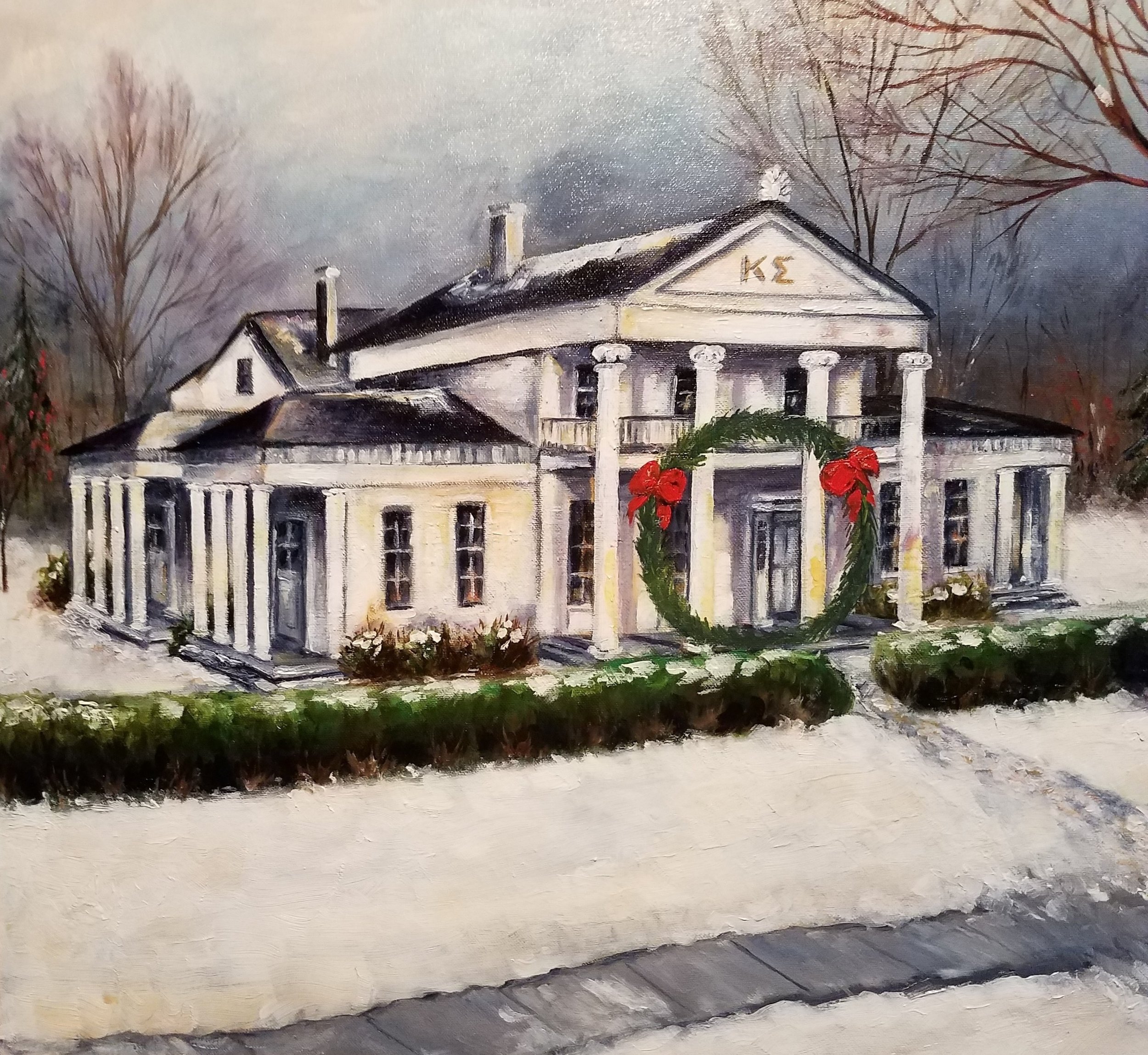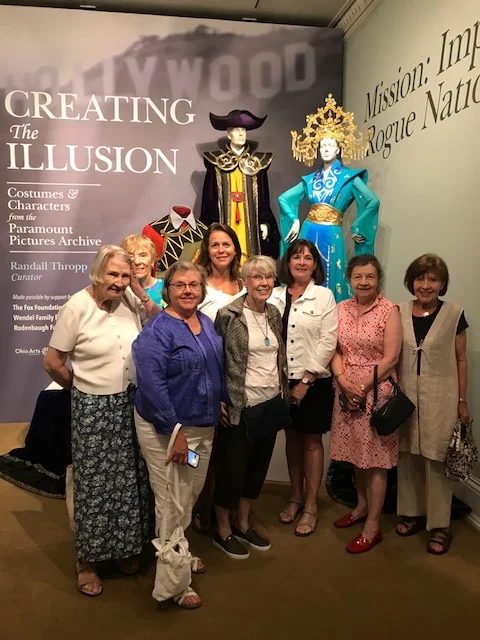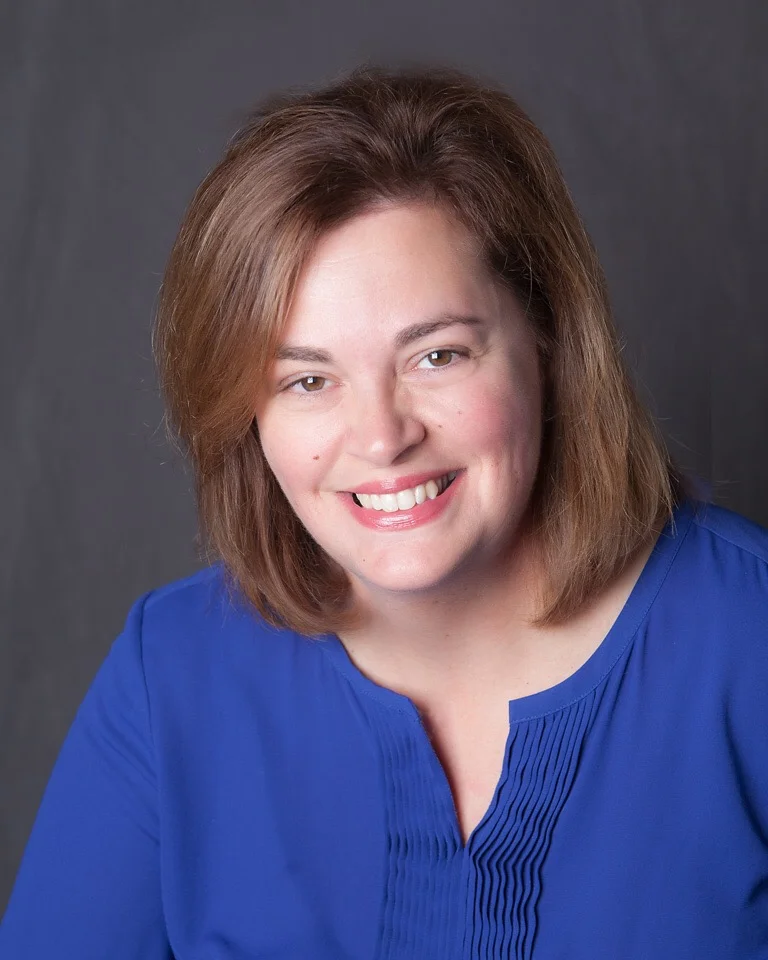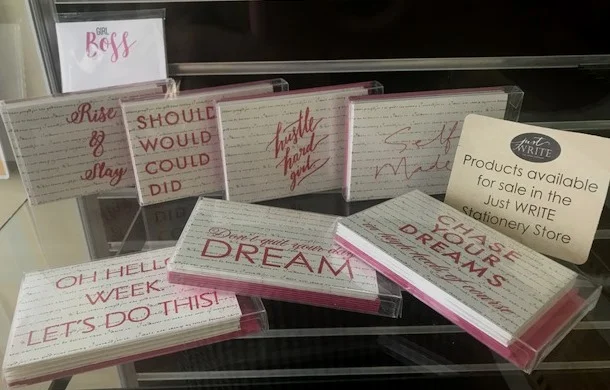We always say if the walls could talk, what stories they would tell.
Whispers of the past slip out when walls are opened up to reveal a glass, a bottle, a wadded up newspaper, or a scrap of fabric. Joined with artifacts --- letters, diaries, photographs --- these clues stitch together stories and stories make history.
And then sometimes, someone comes along to speak first hand and give testament to that history.
A few weeks ago, 88-year-old Irvin Harlamert and his wife, Barbara, walked through the front door of the Avery-Downer House, nearly 70 years after Irvin lived there as a fraternity brother when the house was owned by Denison University’s Kappa Sigma Fraternity.
Top photo: Don Bren, Zeke Ellis and Irvin Harlamert pose in their athletic sweaters with their graduation year, 1952. Bottom photo: Harlamert, Zeke and Don. --- photo courtesy of Harlamert
These were the years when fraternities owned houses in town, scattered here and there. “Students were living all over the Village, in fraternity houses and in rented rooms,” Harlamert said. “I lived in a room in a house on Elm and Pearl for a while before moving into the fraternity house.”
Kappa Sigma bought the house from Phi Gamma Delta, another Denison fraternity in 1930, for $6,000. The Phi Gammas owned the house for 27 years. The Kappa Sigs were proud of the house and their tenure there. “We were aware of the history of the house and tried to maintain it responsibly,” he said, “but I’m certainly more aware now.” They were also proud of their country. Harlamert was among those fraternity members to enlist in the military when Korean War broke out. He served in a fighter squadron for the Navy for five years.
“When the fraternity bought the house, they hired an interior decorator to bring the furnishings up to the latest style. They hired an architect to construct a “Chapter Room” below grade and enlarged the dining room over that area to make what we call the Long Room,” said Ann Lowder, director. This room became the fraternity’s dining room.
An exhibit of the Kappa Sig years at RHM shows photographs of fraternity members scrubbing and painting to maintain the house under their care. Shortly after renovations were completed, the house was voted the most beautiful fraternity house in America and published in the national fraternal magazine in the 1930’s.
Harlamert also carved out fond personal memories of his time at the Kappa Sigma House and they spilled out to Lowder, who encountered Irvin and his wife and took them on a tour. “The gift shop room was our dorm and we all slept there every night,” he said as they peered into the room originally built as a woodshed. Long ago completely restored, the space has been home to several shops and is currently leased to the Just Write stationery shop.
“There could be 30 of us at any one time sleeping in bunk beds,” he said. “We also had rooms in the house with our clothes and desk and I shared a room upstairs with three other guys.”
“The kitchen was ancient,” he remembers. “But Mrs. Philbrook managed to do all the cooking, three meals a day and all the shopping for the 45 – 50 of us who ate there in the dining room.”
Kappa Sigma owned the house until 1956 when Denison called all fraternities to campus. The Kappa Sigs and other fraternities built houses to create fraternity row.
During the time Harlamert lived in the Avery- Downer House as a fraternity brother, the house sported a second floor porch. “Some of us would sleep out there in all sorts of weather, rain, snow, noise,” he said. “We didn’t care. It was fun.”
A large Christmas wreath mounted on what was once the second story porch was the brainchild of Harlamert to send holiday greetings to the community. His wife, Barbara, later depicted it in a painting. --- photo courtesy of Harlamert
One day, Irvin decided to reach out to the community from that porch. He oversaw the construction and installation of a two-story Christmas wreath, which his wife, an oil on canvas artist, later depicted. “I’d like to see the museum do that wreath again,” he said wistfully. Irvin met his wife, Barbara, also a Denison graduate, at the house when she was dating a fellow fraternity brother. They didn’t date then, he said, but they later reunited and married just six years ago.
While the porch brought pleasure to the Kappa Sigs, historical record shows the porch was not original to the house, but added later, around 1870. It was removed about 20 years ago, Lowder said, as its condition deteriorated.
After his graduation from Denison in 1952 and law school at Ohio State in 1955, Irvin spent a career in law as a judge for the Oakwood Municipal Court in Dayton He was appointed by the Ohio Supreme Court to serve as bar examiner to test the legal knowledge of incoming law school graduates. He also served as Special Council to the Ohio Attorney General. He founded a real estate investment business in 1959 with 30 partners that he continues to oversee today.
As he strolled around the house, he saw the beauty and permanence of its presence. “We took reasonably good care of it in our days, but our fraternity abused the house some I suppose.” Time has brought perspective though, and appreciation. Irvin says he’ll be back.













